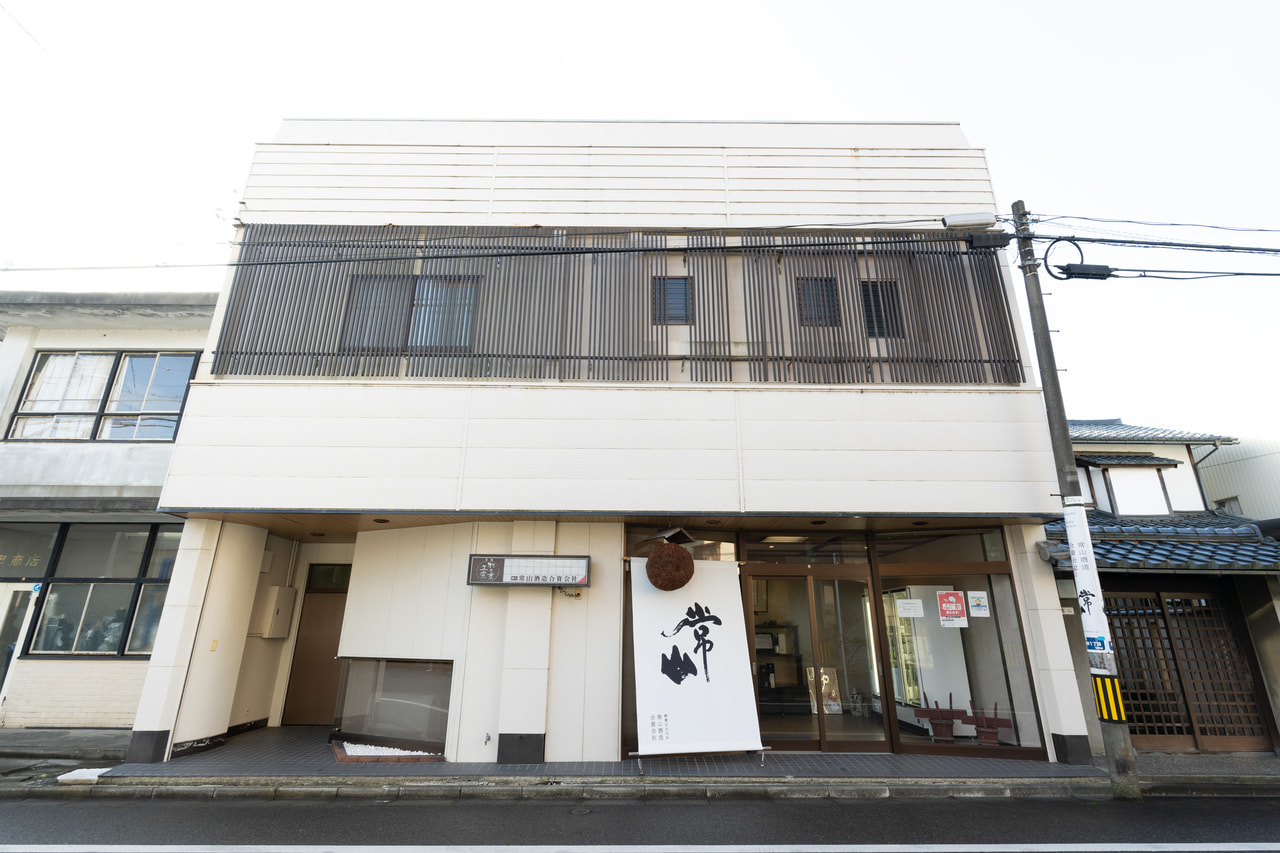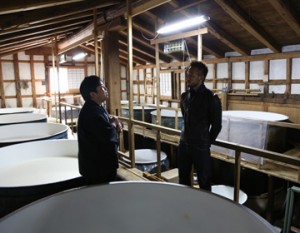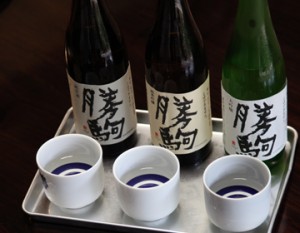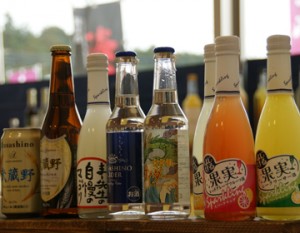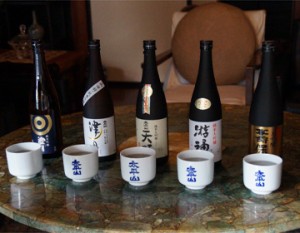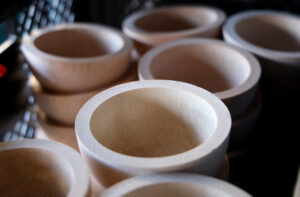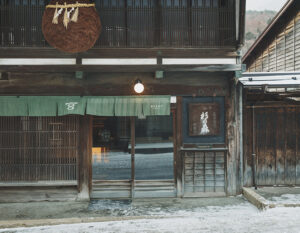Located near JR Fukui Station in the central city center of Fukui City, Fukui Prefecture, the brewery Tokoyama Shuzo’s representative brand is “Jozan,” known for its crisp, clear, dry taste, which has gained in maturity since Shinpei Tsuneyama, the ninth-generation master brewer, became master brewer. The mother and son, who inherited the spirit of their father, who passed away suddenly in the middle of his career, have further deepened the flavor of the sake to make it dryer and more suitable for today’s palate.
What is the ninth generation’s goal in sake brewing?
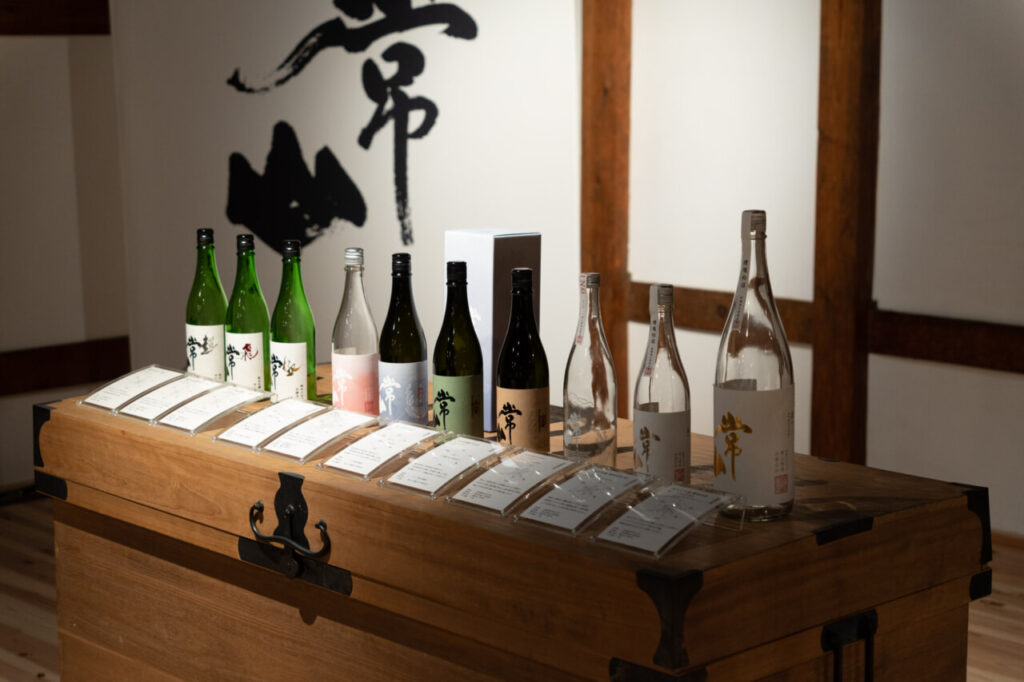
The Tsuneyama Brewery was founded in 1804, in the late Edo period. It is the oldest brewery in Fukui City. The brewery began as a purveyor to the Fukui clan, and by the Taisho era (1912-1926), it had become the largest sake brewery in Fukui City. Each time, the brewery was revived with the support of drinkers, and the family business has continued to carefully produce sake.
In 2022, Shinpei Tsuneyama will take over as the ninth head of the brewery, passing the baton from his mother, the eighth generation. He renewed the lineup of “Tsuneyama,” the brewery’s flagship brand. Based on the concept of “Koshiyama Wakamizu,” a term used to describe the natural beauty of Fukui Prefecture and its water, the brewery uses Miyamanishiki and Yamadanishiki sake rice grown by contract farmers in the Miyama area in the mountains of eastern Fukui City , Gohyakumangoku and Sakahomare, which were developed by Fukui Prefecture, and Fukui’s own proprietary yeast.
The series’ white labels are designed by Shogo Kizumino, a graphic designer who has worked on the “JAL SKY MUSEUN” and Lotte’s “ZERO” series. The white color of the label, which evokes the image of rice, is designed to be a bridge between rice and food, while the logo is reminiscent of the mountains and sea of Echizen.
The three main flavors are junmai dry “Cho,” junmai ginjo dry “Tobi,” and junmai daiginjo mellow dry “Kyoku. They are characterized by a dry, crisp taste that goes down the throat easily and harmonizes well not only with delicately flavored seafood, but also with today’s fatty meals. It combines the profound flavor of the mountains of Echizen with the fresh minerality and spiciness of the sea of Wakasa, resulting in a taste that is more than just light and refreshing.
Attention to detail to remove miscellaneous flavors
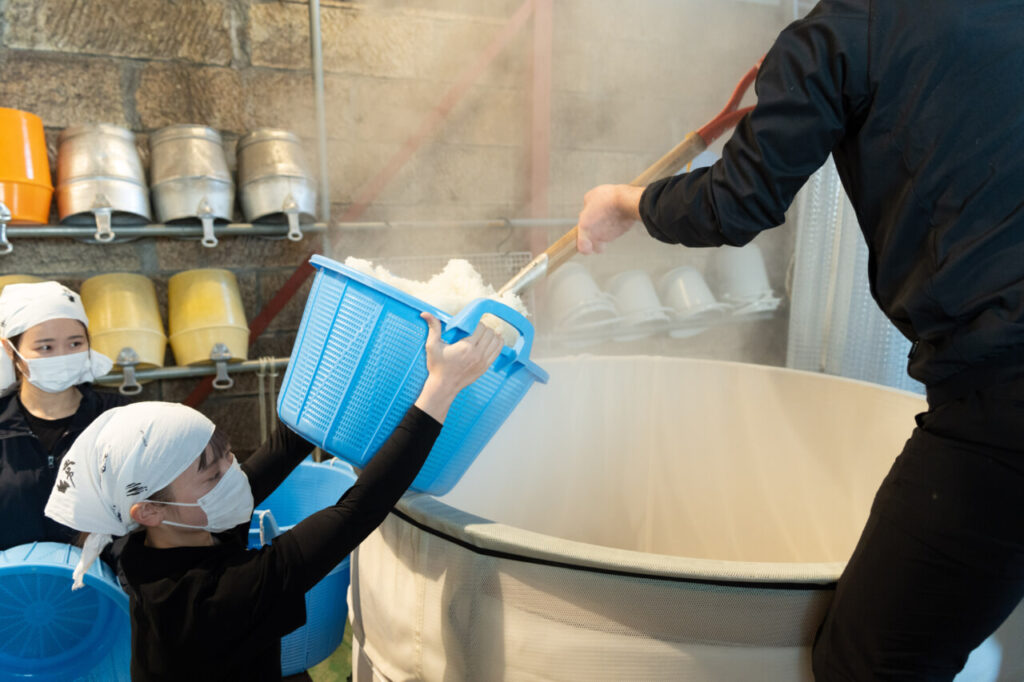
The sake is clear, transparent, and full of umami, with a great impact and sharpness. How is such sake made?
When you visit the Tsuneyama Brewery, you will notice that everything in the office and workshop is neat and tidy. Under the motto “Sake making starts with the environment,” the entire staff thoroughly cleans up every morning before work. The rice is carried by hand instead of using an air shooter, which is generally used to carry rice in a sake brewery. The sake is then transported by hand, for fear that the small amount of rice that remains will lead to a bad taste. In the pursuit of a clear, transparent flavor, we became concerned about areas that we thought could cause a tangy taste,” said Shinpei. By reviewing each step of the brewing process in detail, the brewery was able to produce a flavor that was closer to the ideal.
No stress on yeast during fermentation
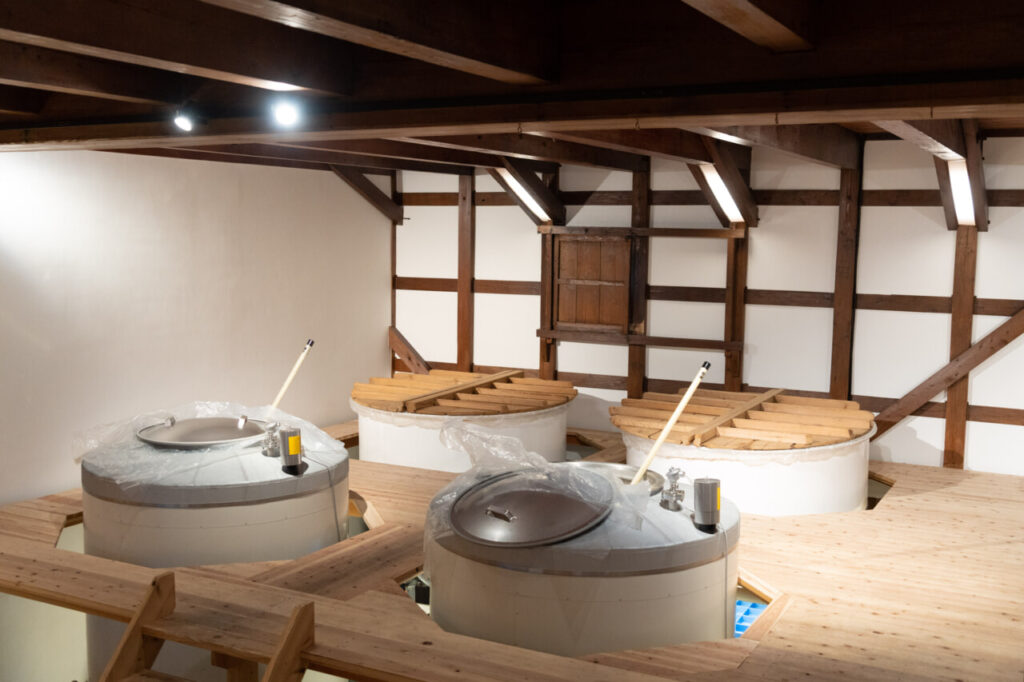
The tanks used to brew sake were also carefully selected. In September, when the brewing process at Tsuneyama Brewery begins, the outside temperature can still exceed 30 degrees Celsius on some days. At the end of the brewing process, the tanks are cooled to add sweetness to the flavor. To prevent stress on the yeast, special tanks are used that are less affected by the temperature difference from the outside air. Shinpei says, “In order to deeply pursue the flavor, it was also important to select the tank itself.
In addition, the temperature in the brewery is strictly controlled, including ice temperature control after pressing and rapid heating and cooling during bottling, while sake retailers are also carefully selected for their ability to control temperatures.
Developed by his father, the previous generation, the flavor goes well with Fukui’s specialties.
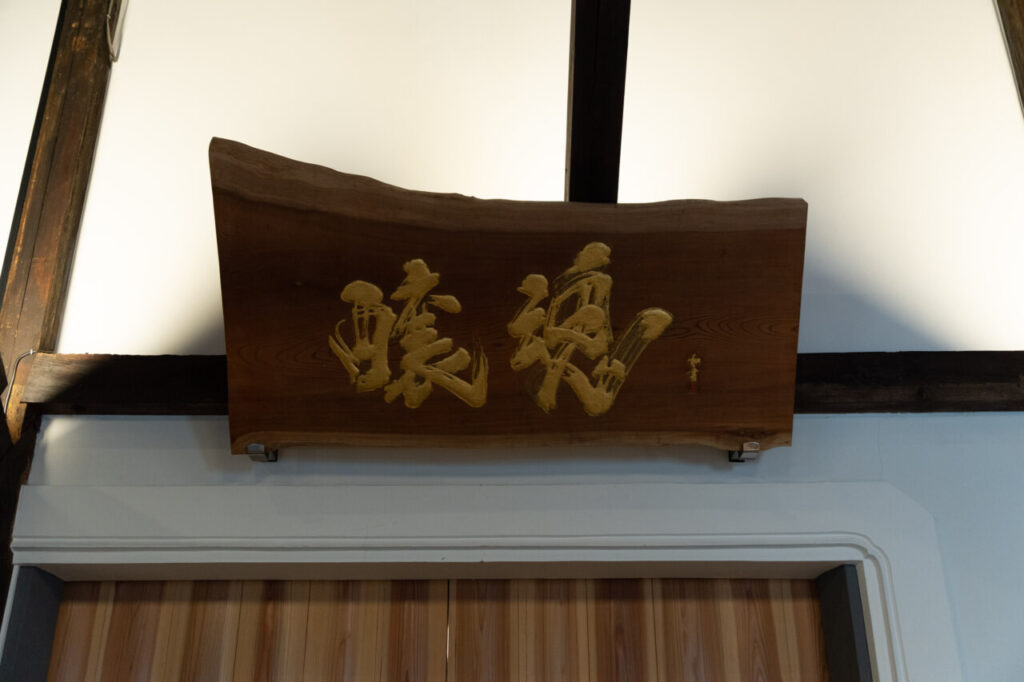
Mr. Shimpei is dedicated to the dry taste of the famous sake “Tsuneyama” and continues to update it to suit the modern age. At the root of his efforts is his love for his father, who died in the middle of his career.
In the past, the Tsuneyama Shuzo brewery mainly produced an ordinary sake called “Hanejyu Masamune” for a long time. However, his father, Hideaki, the seventh generation, foresaw the coming of a new age of sake and introduced “Tsuneyama” as a new junmai sake in 1997. The sake was developed to suit the fresh seafood caught in Fukui’s seas, and is characterized by its elegant ginjo aroma, smooth and fresh mouthfeel, and crisp aftertaste. It was also well received as a perfect partner for ” oroshi soba, ” a specialty of Fukui, as it did not interfere with the delicate aroma of the soba and went well with the freshness of grated radish.
Several years later, however, Hideaki passed away suddenly at the age of 48, halfway through his quest to popularize “Tsuneyama. Shinpei was only 19 years old and a college student at the time, so his mother, Yukiko, succeeded him.
Mother, the 8th generation, established the Tsuneyama brand
First, Yukiko carefully selected sake dealers for a specific brand of “Tsuneyama” to maintain the quality of sake. She also researched sake rice and rice polishing ratios in search of the best sharpness to enhance the lineup of “Tsuneyama,” which is based on the concept of dryness. Normally, the sake strength of “6” is considered to be very dry, but the company has made a move toward dryness by producing “Super Dry,” a junmai daiginjo sake with a sake strength of around “8,” and “Tobikkiri Dry,” an ultra-harsh raw sake with a sake strength of around “21.
The key to making dry sake is to keep the yeast strong during the fermentation period without weakening it, and to strike a balance so as not to produce a cloying taste. This was achieved by the skill of the Nanbu Touji, who supported Hideaki.
Yukiko actively entered their sake in numerous sake competitions, including the ” Wineglass Delicious Sake Award ” to have it evaluated by a third party. The awards also increased their opportunities to be featured in the media. This led to branding and the creation of a taste that matched the modern diet, and the base of “Tsuneyama” was established as the name became well-known among young people and other sake novices.
The young 9th generation takes over the brewery in the new era of sake.

After graduating from university and working in sales at a major sake brewing company, Shinpei returned to his hometown in 2011 and joined the Tsuneyama Brewery. At that time, “Otters” and “Kajinin Kuheiji” were beginning to gain recognition in the global market, riding on the back of the Japanese food boom overseas. With the dawn of a new era of Japanese sake as a tailwind, he began brewing his own sake.
In his fourth year of brewing sake, he won the gold medal at the National New Sake Competition.
Although born into a family of brewers, Shinpei was a complete amateur as an actual sake brewer and did not major in agriculture at university. He was taught from the ground up by a veteran toji, who had worked with his father and mother in the sake brewing industry. I was under a lot of pressure to make sake somehow,” he says.
He did not try to be eccentric, but instead carefully learned the basics one by one, sometimes going to other breweries to learn from them. In his fourth year of sake brewing, the sake he produced won a gold medal at the National New Sake Competition.
Three years later, in 2018, the veteran toji who had supported the brewery for so long retired, and Shinpei became the brewing director. That year, the brewery won the Platinum Award, the highest award in the Junmai Daiginjo category, at Kura Master, a prestigious sake competition for food professionals held in France. The sake brewery won gold again in 2020 and 2021 at the same competition, and has since become the focus of attention both at home and abroad.
Sake brewery renovated into a “place of hospitality
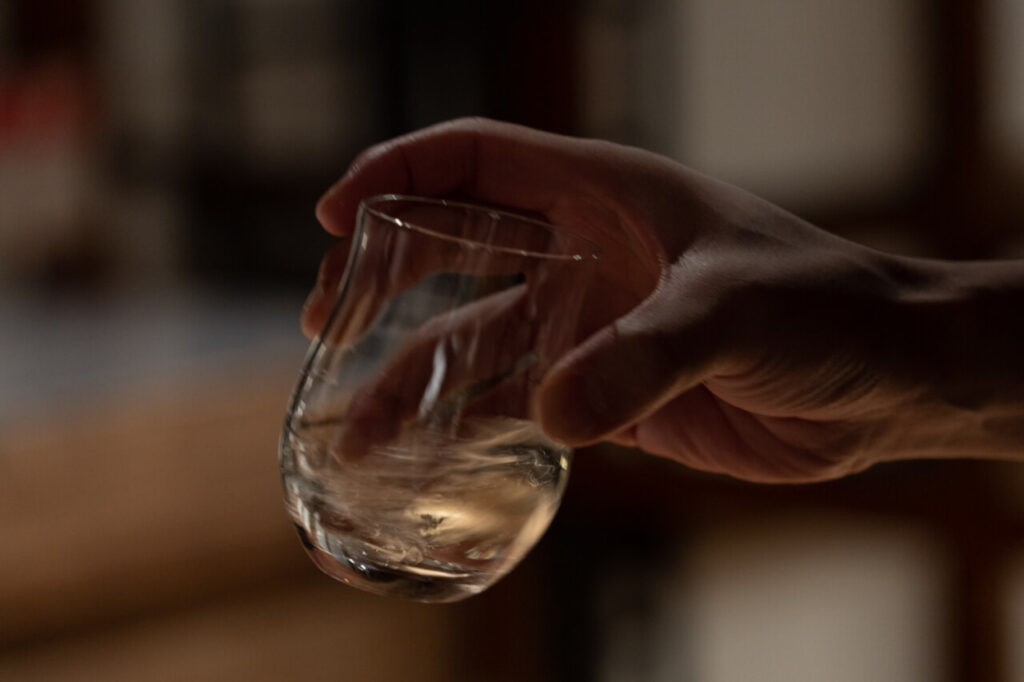
While visiting wineries overseas, Shinpei was surprised to learn that most of them offer tours of the production process and wine tasting with detailed explanations. In Japan, there are still many breweries that do not even offer tours of their breweries.
Tsuneyama Brewery is the closest brewery to JR Fukui Station, so it is not uncommon for visitors from other prefectures to apply for tours or to visit the brewery. We will create a place to entertain such visitors. I thought that if we could present our products directly and add value, we could compete at a higher price than usual,” he said.
In 2018, Shinpei and his mother, the 8th generation, began renovating their brewery. They made use of the zelkova beams, which are over 10 meters long in the historic warehouse, and covered the second floor with plaster walls and cedar plank floors to create a multipurpose space that can be used for business meetings and tours. During the brewing season, the aroma of steaming sake rice rises from the barrels on the first floor, making the design more attractive to visitors.
The label design allows visitors to grasp the flavor image at a glance.
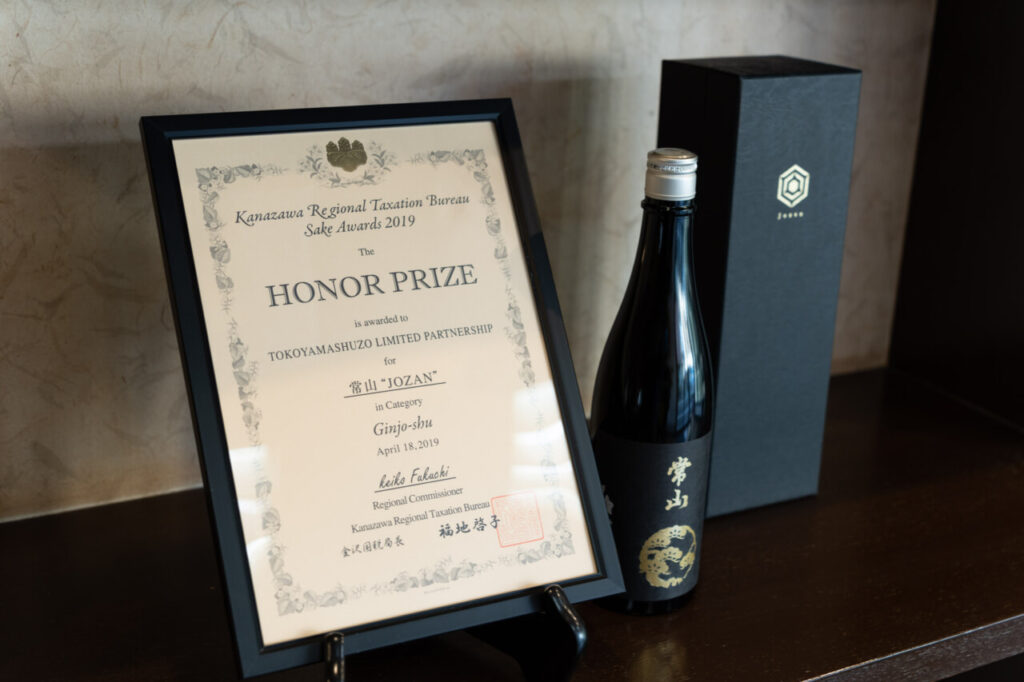
During the same period, we also focused on brushing up the labels and packaging, and from 2018 to 2020, we will be working with Hatooba Shoryu, a crest painter from Kyogen, known for designing the crest of the NOHGA HOTEL UENO hotel in Ueno, Tokyo, and his son and daughter, Yohji and Hatooba Shoryu. Yohji and his son were commissioned to create the branding for the company.
The design of the “Araiso,” a freshly pressed, slightly carbonated sake, features an auspicious sea bream jumping on a navy-gray background reminiscent of the Sea of Japan during the New Year’s holiday season. With its cool design, it attracted a lot of attention each time it was released.
Being loved by the local community is the key to winning.
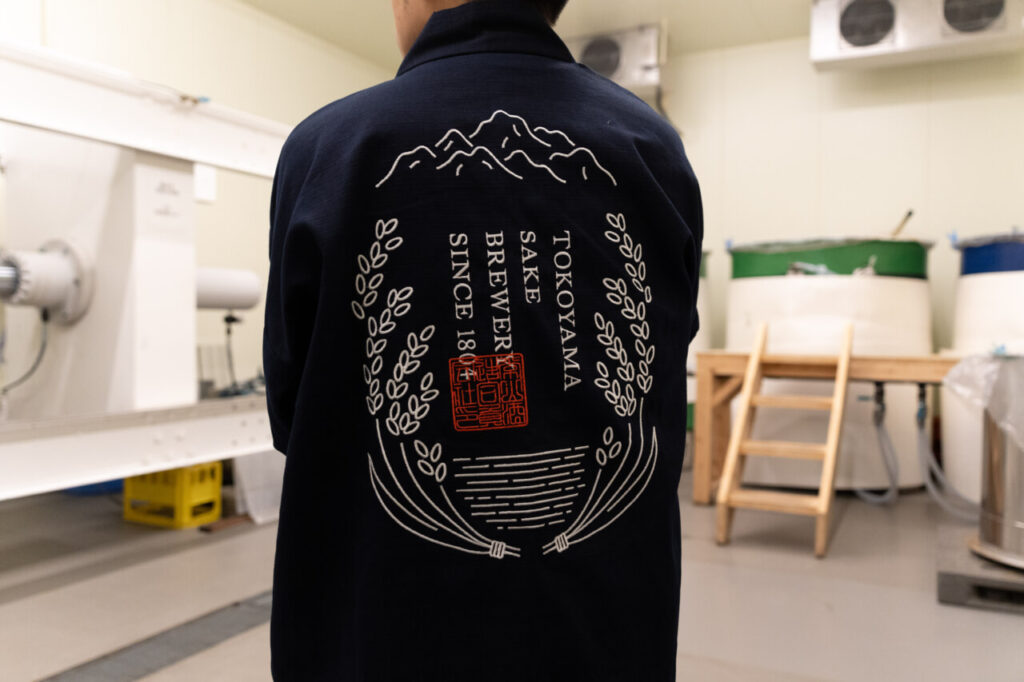
Standing in the new brewery, where the smell of cedar wood still lingers, and looking at the new Tsuneyama lineup that he has created, Shinpei recalls his father, the seventh generation, who said, “Local sake must be loved by the local people. On the day of the opening of the Tsuneyama Brewery, many people from the Miyama area come to the brewery on a shared bus.
Recently, there has been a sake boom overseas, and more and more products that sell well in Japan are being sought after and shipped across the sea. But I believe that sake that sells well in Japan, sake that has been loved for a long time, is local sake that has cherished its hometown,” says Shinpei. It is the local people who will be the first to drink sake, learn about its qualities, and pass them on. It is the local people who will be the first to drink sake, learn about its qualities, and pass them on. This is where the future of sake lies.
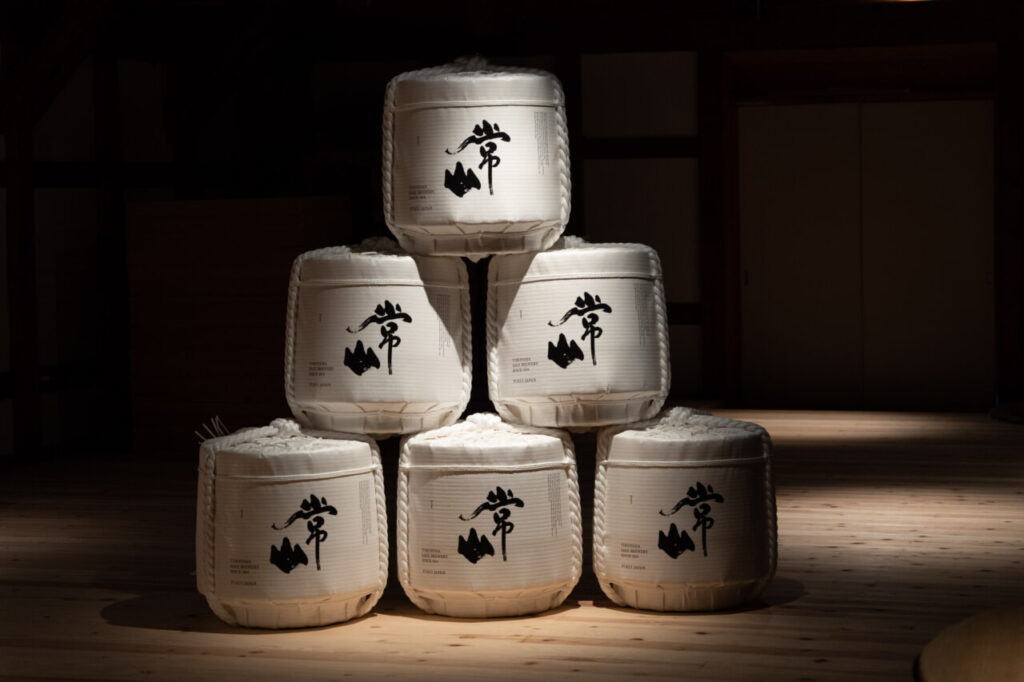
The new Tsuneyama series is designed to enhance the taste of Fukui’s fish dishes and sushi. The ninth-generation brewer is looking to the future with eyes brimming with love for his hometown, saying, “I want to create a sake that has a strong presence so that people will know that this is Tsuneyama when they take a sip, and that they will be reminded of the scenery of Fukui when they drink it.



